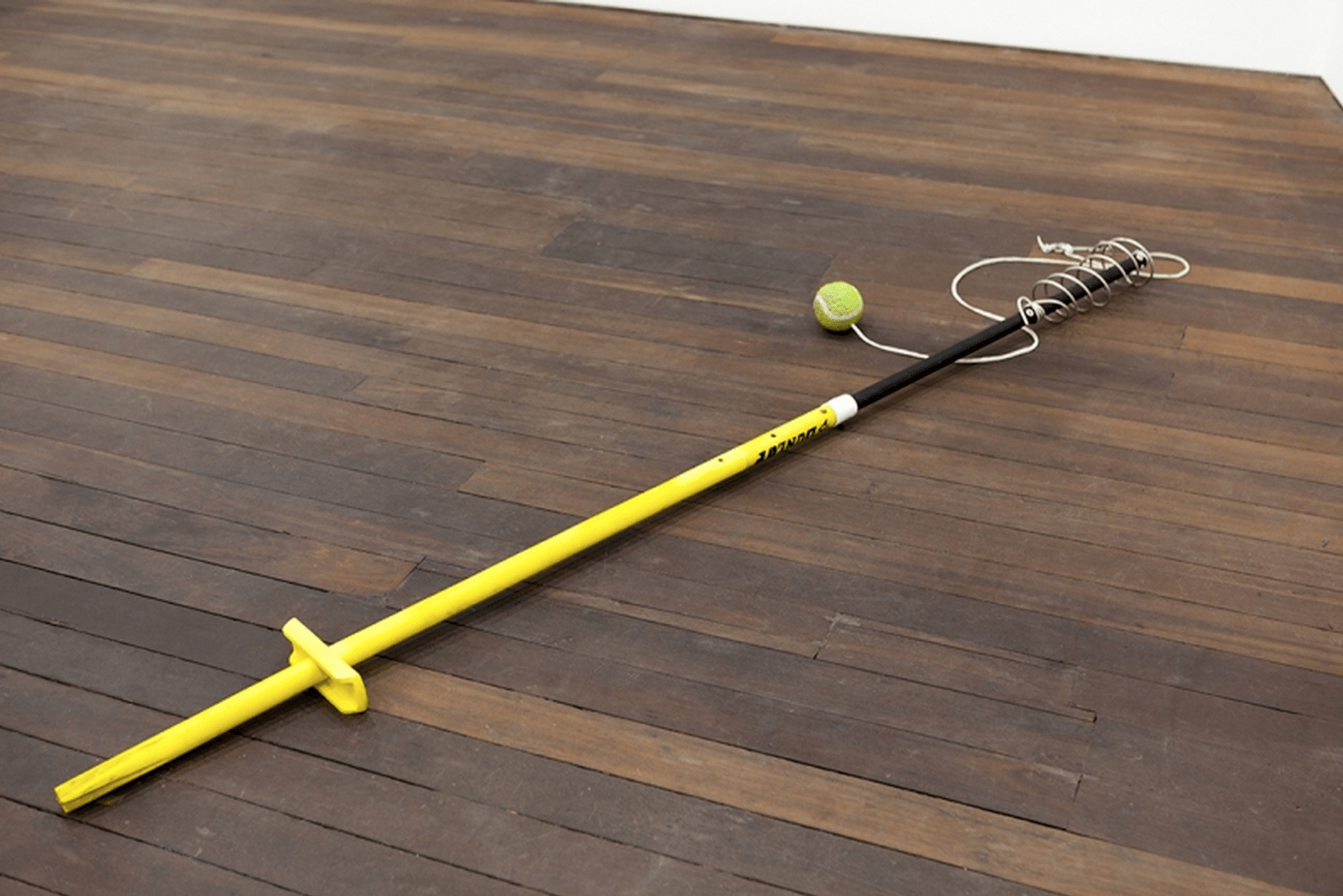
Loose Change Menu: an apt title for a rather ill fitting yet satisfying jumbled assortment of artworks. On the whole, it’s a haptic exhibition: giant poster prints of an old couch drape over the walls, literally spilling into the creative studios next door; an unearthed tennis pole from a game of swing ball is lounging diagonally across the floor; the innards of corporate office shelving awkwardly prop themselves up moments before collapse; and sharp, geometric paintings from the ’90s stand to attention in an otherwise impotent fumbling of lost things. In all its chaos, Loose Change Menu has relevancy and is an individual and rare find of a show where one is rewarded for paying attention and an eagle eye to its detail.
Perth’s property market has seen the emergence of reclaiming unused top floors. A smartly designed architectural vessel composed of Jarrah timber walls and signature pyramidal entrance, the recently established Moana Project Space co-inhabits a heritage-listed ballroom alongside studios and a café in the heart of the CBD. The gallery acts as a free-floating white cube amongst the noise of high-rise buildings and the mall below. A lone ranger of Perth’s inner city contemporary spaces, Moana, founded and curated by Dale Buckley and Kate Mullen, offers up Loose Change Menu, a collaboration of new mixed media works conceived by West Australian artists Patrick Miller and Georgia Kaw and paintings by Sydney based artist Elizabeth Pulie.
The exhibition takes its title from new fast-food bigwig McDonalds menu option. Taking the incidental remainders from larger transactional processes as its subject, Moana is basically offering the very last of what you have as a starting point, making for a wry yet literal shift in questioning what we deem valuable.
Entering the space, Kaw’s impressively scaled digital print entitled This Lady Who Seems to be Pouring Red Wine out of Her Mouth from a Vertical Position Reminded Me of You (2013) captures in its fuzzy, low-fi sheets the un-cushioned depths of a roadside Bondi couch. Perhaps this was once where a cigarette lighter or two-dollar coin disappeared.
At first glance, Synonyms for Particular (2013), also by Kaw, seems nothing more than a fallen tennis totem lying sparingly on the floor. On closer inspection, the surfaces have an uncanny resemblance to the very totem it mimics. We are faced only with a reproduction of its collapse, becoming the end game for a childhood memento. It almost acts as a double illusion—the replica carved out of balsa wood is crafted so meticulously that it trips you up as a confounding absurdity.
Further reconfigurations of objects continue to be abstracted. Miller’s Mixed Motivational Messages (2013), a digital image cleverly printed on glass, and composed and rendered using 3D modelling, sits diligently on a shelf in front of a stretched square of white neoprene secured to the wall with steel tent pegs. These 3D-rendered objects—cigarette, fishing float and magician’s wand—occupy a sunny skyscape. All share a particular formal and common ground but operate as dysfunctional ‘motivators’, privileging leisure over hard work. Curiously, they also have the potential to perform a magical task: levitation, disappearance and distraction.
It is the stressing of the ineluctable flatness of the surface that remains more fundamental than anything else by which pictorial art criticised and defined itself under Modernism. For flatness alone is unique and exclusive to pictorial art. In two early number paintings, Nineteen (1990) and One Hundred and Fifty One (Vincente) (1990), Pulie deliberately calls attention to the natural flatness of the canvas. It’s easy to get lost in the multiple surfaces as they morph into a possible school uniform, tablecloth, napkins or even a snarling and sour cat’s face. Appropriated from recognisable Australian cultural motifs, the paintings are refreshingly vibrant, operating much more two-dimensionally in visual perception.
Collectively, the works leave you somewhat bemused. The viewer’s feeling of confusion seems intentional on the part of the artist and, after further thought and consideration, it suddenly becomes clear that it’s all been a trick. Illusion has prevailed. These artists are pulling my leg just so they can steal my wristwatch. Did I get ripped off or get exactly what I paid for?
Chelsea Hopper is a curator and photographer based in Melbourne.
